Mastering social media content creation: Your complete guide
To reach your brand’s social media marketing goals, you need a plan. You have to create the right content for the right audience and post it on the right channels.
In this article, we’ll cover everything from researching followers to choosing formats to writing social media copy. And we’ll recommend top tools for your social media content creation workflow.
What is content creation in social media?
Social media content creation is developing content to publish on social platforms. Common types of social media content include:
- Text
- Videos
- Images
- Link posts
- Livestreams
The content creation process typically starts with researching the target audience and developing ideas. It usually ends with analyzing the results of the content you’ve published.
Whether you’re a content creator or you manage social media for a brand, it’s worth investing time in creating relevant, high-quality content.
Great social media content helps you:
- Boost awareness of your brand, products, and services
- Expand your reach across social media platforms
- Cultivate a community of loyal fans and customers
- Drive traffic to your website
- Generate leads and convert customers
8 essential steps for social media content creation
1. Set clear goals
Strong social media marketing goals define what you want to achieve and why. They help you understand what to publish, which speeds up your content creation process. And ensures you prioritize the right tasks.
Use the SMART framework as a guide for your goals:
- Specific: What exactly do you want to achieve and why? Provide as much detail as possible.
- Measurable: How will you quantify or qualify the results? Identify the metric(s) you plan to use.
- Actionable: What steps will you take to achieve the goal? Prioritize goals with realistic steps.
- Relevant: Is the goal related to your current scope of responsibilities? Focus on goals that matter.
- Time-bound: When do you need to achieve the goal? Set a deadline for yourself or your team.
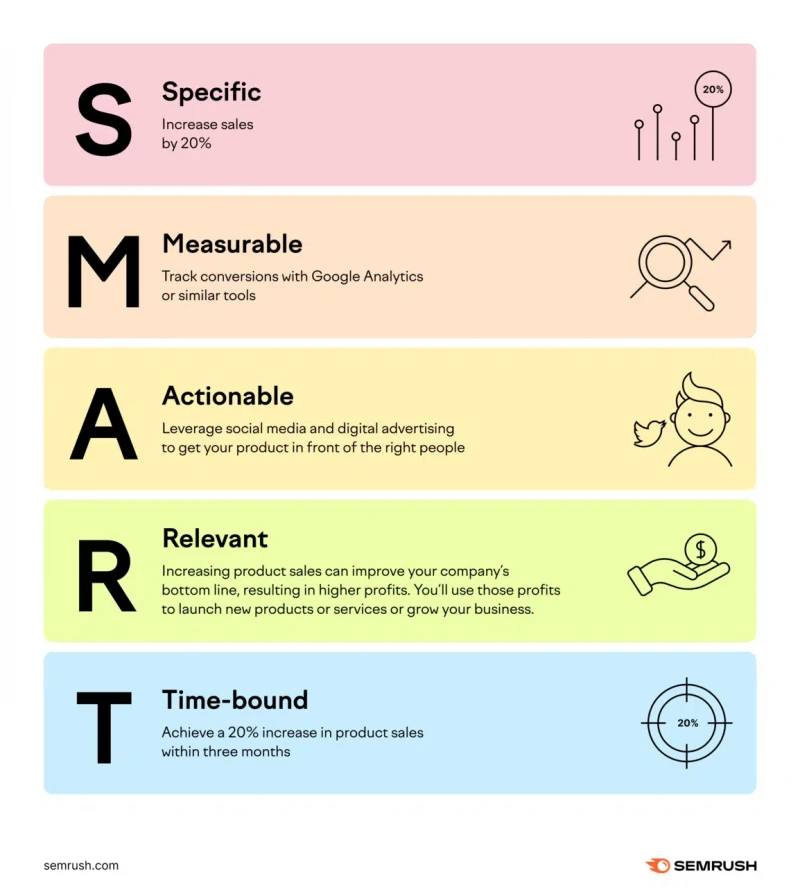
Here’s an example of a SMART social media marketing goal focused on building brand awareness:
Our team aims to get 10,000 YouTube video views (measurable) by July 31st (time-bound). To reach this goal, our team will create and publish one long-form video per week (actionable).
Based on past performance, this number of video views will lead to at least 1,000 new YouTube subscribers (specific). Which will increase brand awareness as we expand to a new market (relevant).
And a goal targeting website traffic might read like this:
We need to drive 5,000 clicks to the landing page (specific, measurable) within the first 24 hours of the marketing campaign (time-bound) to achieve our quarterly traffic goal (relevant). To do so, we will create and publish a Facebook post, an X post, and an Instagram story with a link to the page (actionable).
We will then retarget these website visitors by creating a remarketing audience. And guide potential customers toward making a purchase.
2. Research your audience
To achieve your goals, you need to know how to connect with your audience. Research your followers to get social media content creation ideas.
Use Semrush’s Social Analytics tool to research Facebook, Instagram, and LinkedIn followers. On the main dashboard, select the social media profile you want to research. Or hit “+ Add profile” to add a new one.
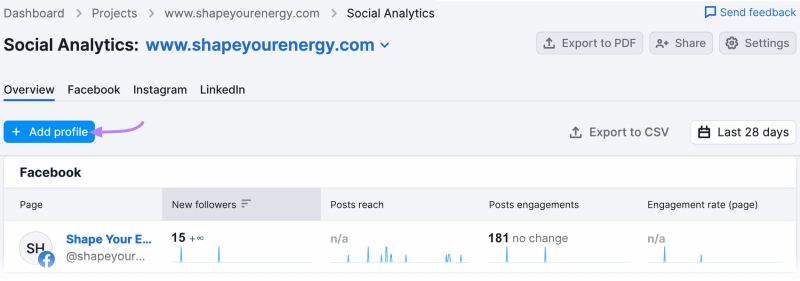
Then, make note of demographic data like your followers’ age and gender.
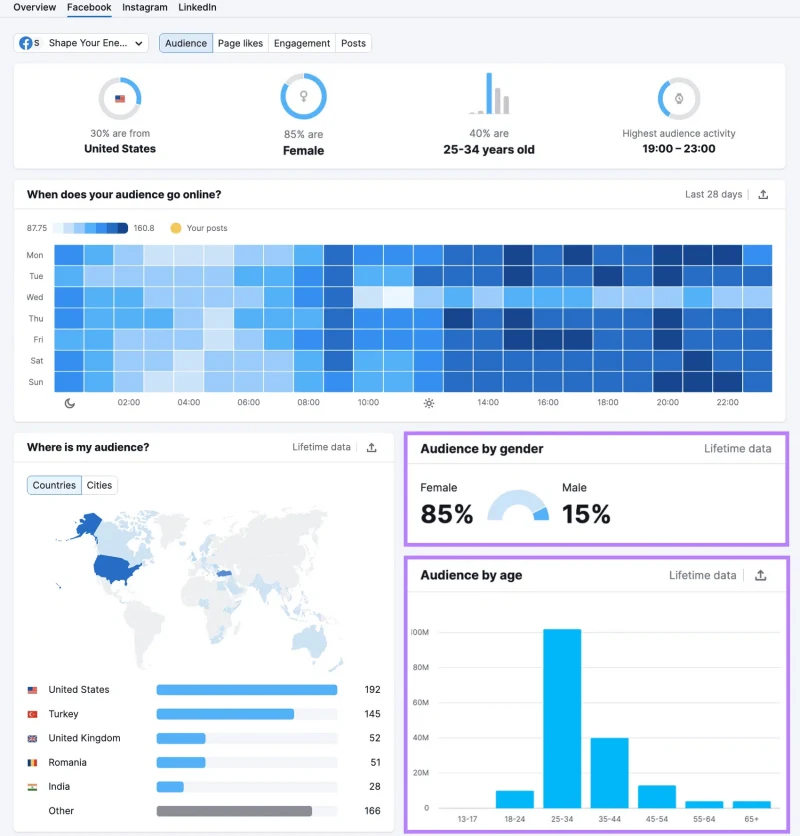
You can also toggle between the “Countries” and “Cities” tabs to get more or less granular location data about your followers.
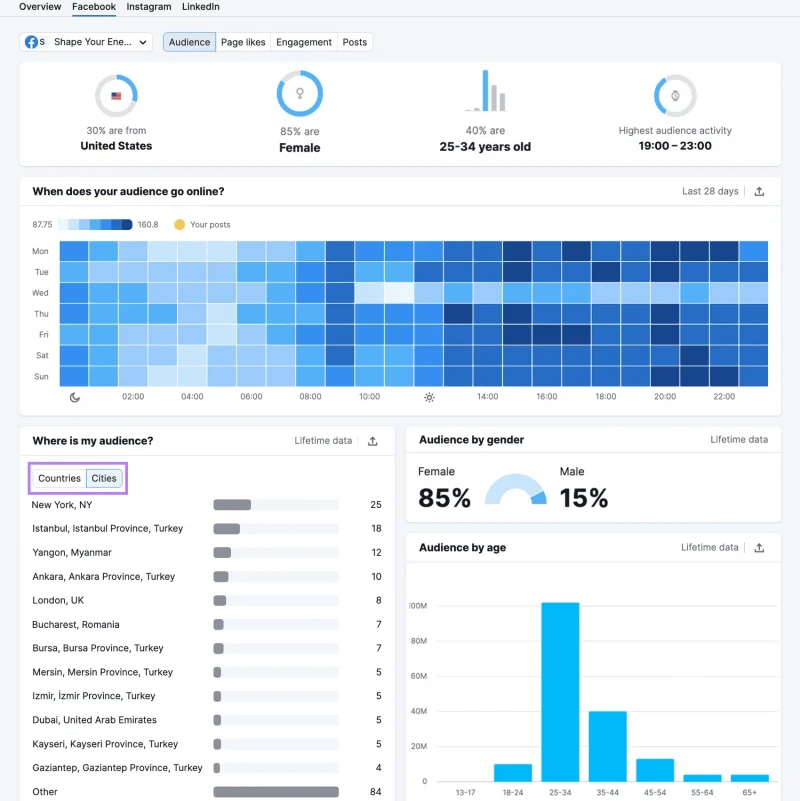
For more data on your target audience (but not necessarily your current social media followers), use Semrush’s One2Target. You can find this tool under “Trends.”
Input up to five of your closest competitors. After you enter the first, the tool will automatically suggest others. Click the “Analyze” button.
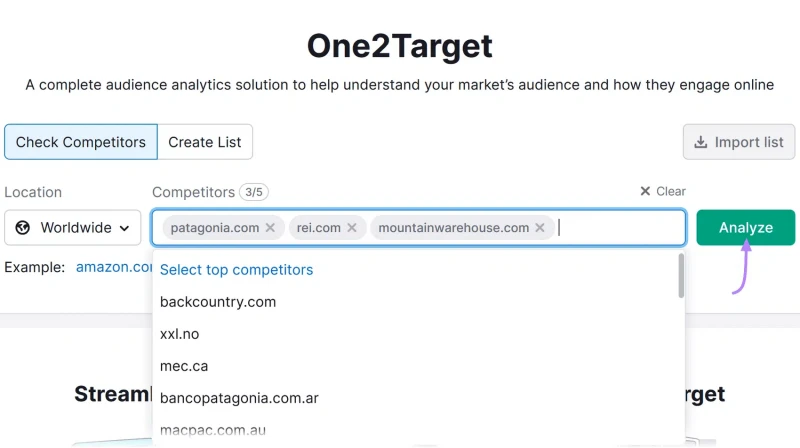
Then, review the age ranges and gender breakdown for your competitors. To get a better sense of the demographics of the audience you’re targeting.
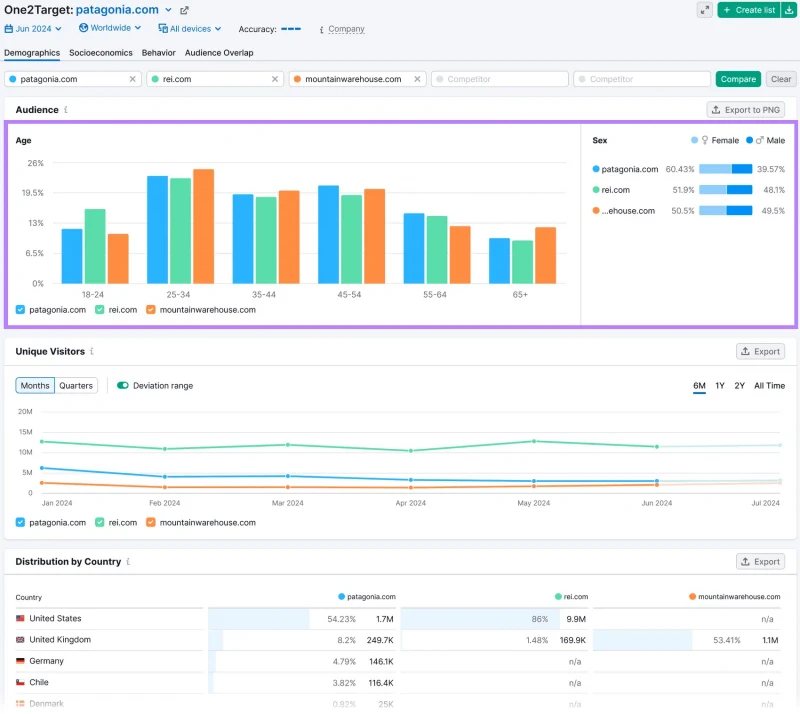
Navigate to the “Socioeconomics” tab to learn about your target audience’s household size, income level, education level, and employment status.
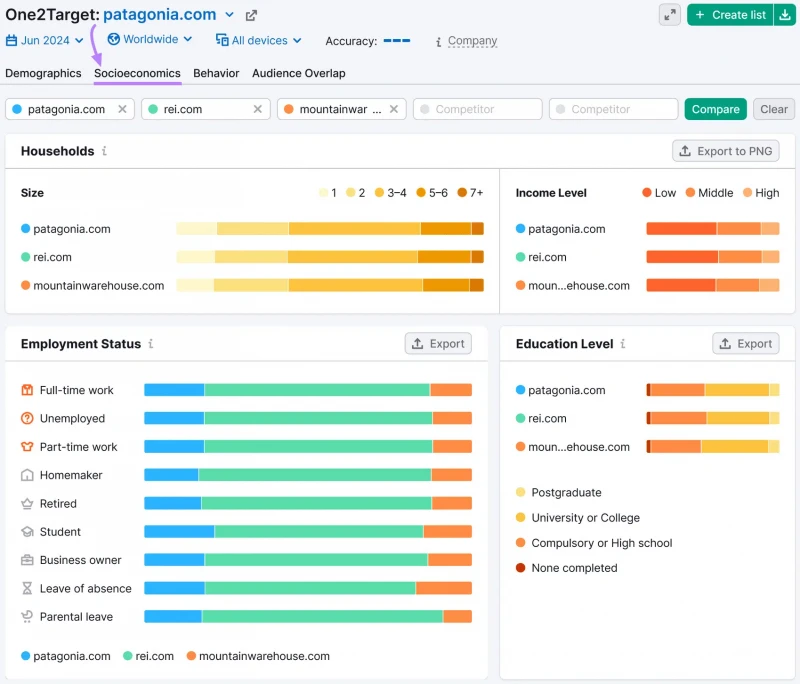
For example, Patagonia’s largest audience segment includes households with three to four people. This Patagonia Facebook post appeals to this segment by featuring families enjoying the outdoors.

3. Analyze your competitors
One way to get content ideas that resonate with your audience is to analyze the competition. Use Semrush’s Social Tracker to see the social media campaigns competitors are running and find opportunities for your brand.
Scroll down to the “Comparison With Competitors” panel. Click “+ Add competitor” to choose more brands to compare.
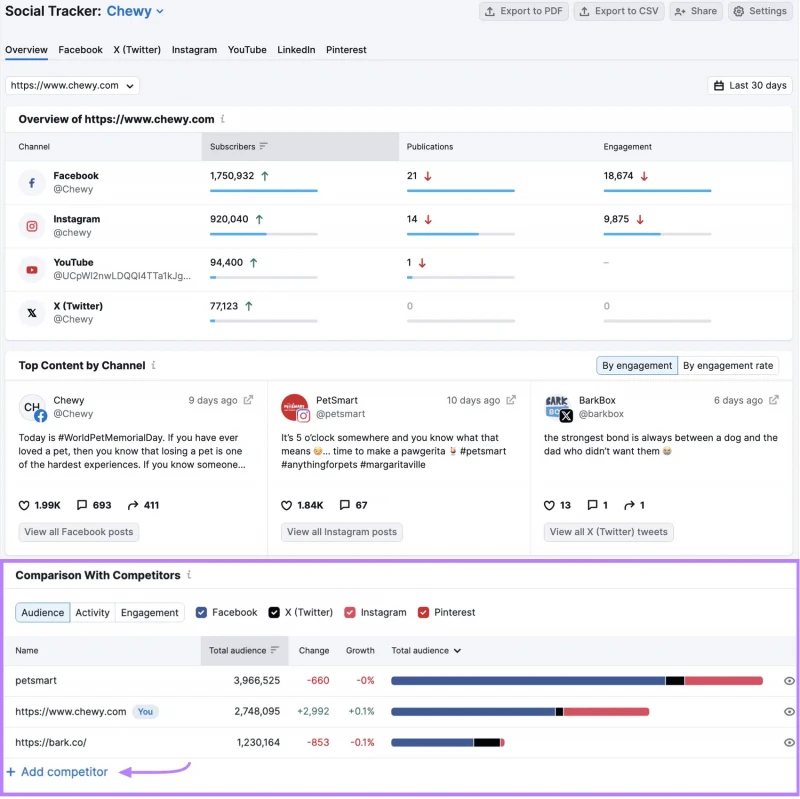
Click “+ Add competitor,” enter the brand’s name, and hit “Add.” The tool automatically identifies the brand’s social profiles and adds them to the list.
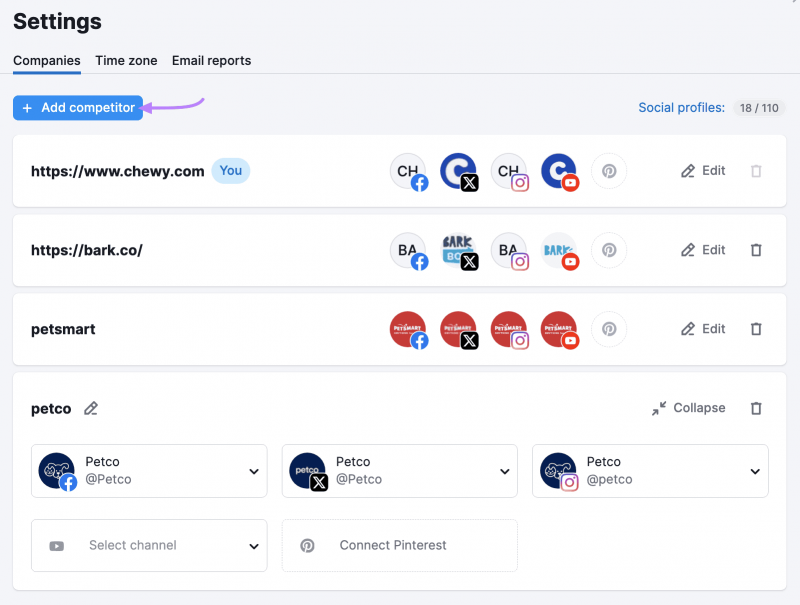
Toggle between the “Audience,” “Activity,” and “Engagement” tabs on the “Comparison With Competitors” panel to see how your brand measures up.
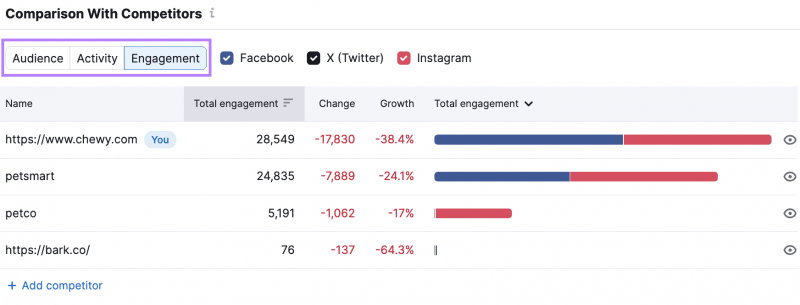
For a platform-specific comparison, select one of the platform tabs. Then, choose which category to compare.
For example, when you opt to compare Facebook engagement, you can see the total engagement for your brand’s Facebook profile. And how it compares to the competition.
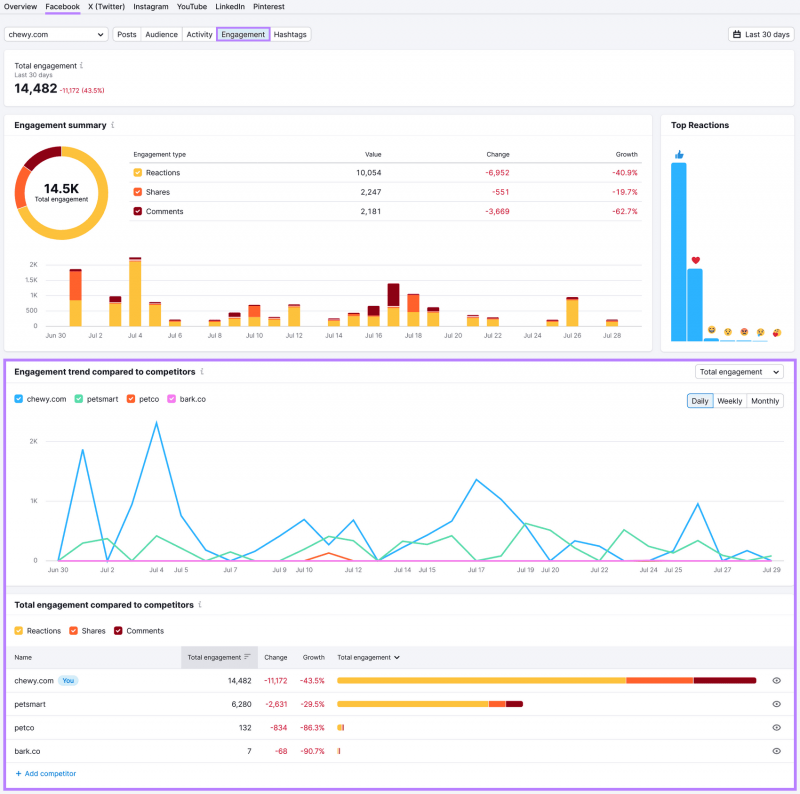
To see what’s driving engagement for your competitors, go to the “Posts” tab and sort by “Engagement.” Click any post to expand or view the original content to get ideas for your own brand.
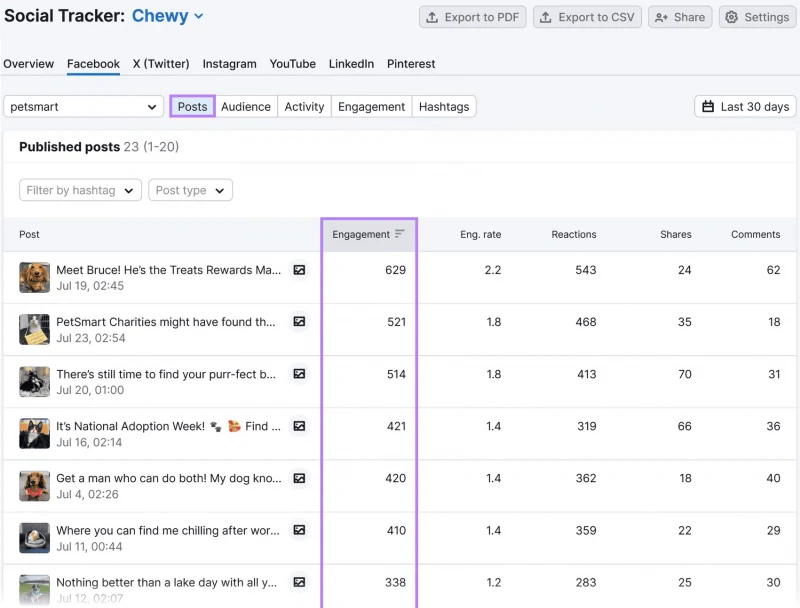
For example, look for trends or memes your competitors are engaging with. If they’re relevant to your brand, consider adding them to your content plan.
4. Choose content formats
Select the right format for your content. Use your goal to inform your choice.
For example, if you want to tell a complex story, consider using a short-form video.
Here are some of the most popular social media content formats:
Text posts
Text posts work well when you want to tell a story, share a lesson, or ask a question. Like this beehiiv X post:

By asking this open-ended question, email newsletter platform beehiiv generated dozens of responses.
Images
Image posts are great for showcasing products or sharing lifestyle content. Like this Mokuyobi Instagram post:
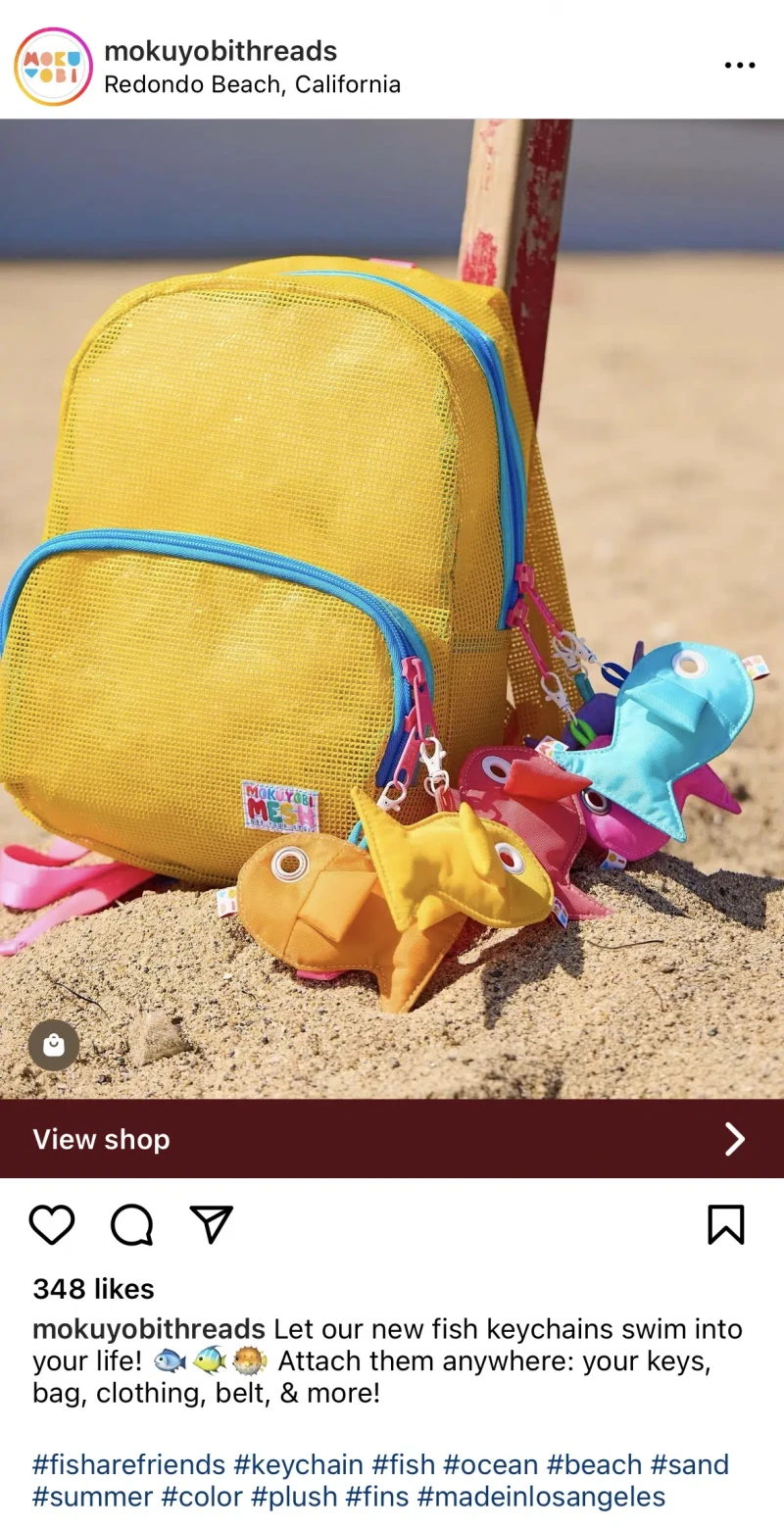
The accessories company uses image posts to draw attention to its colorful products. And encourage customers to tap to browse the brand’s shop.
Many platforms allow you to upload multiple images at once in a grid or carousel format.
Videos
Videos are ideal for sharing more complex ideas and thought leadership. They’re also great for educating and entertaining viewers.
Like this Red Bull YouTube video, which has generated over 1.5 million views:
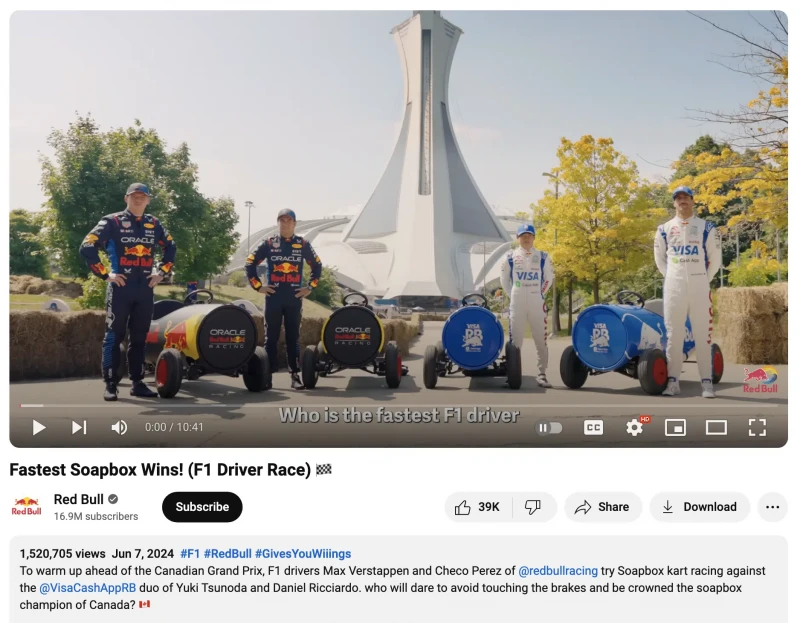
The beverage brand regularly uses video to showcase extreme sports. And create a sense of adventure around its energy drinks.
Link posts
Link posts are best when you want to drive traffic to your website. Like this Semrush X post:
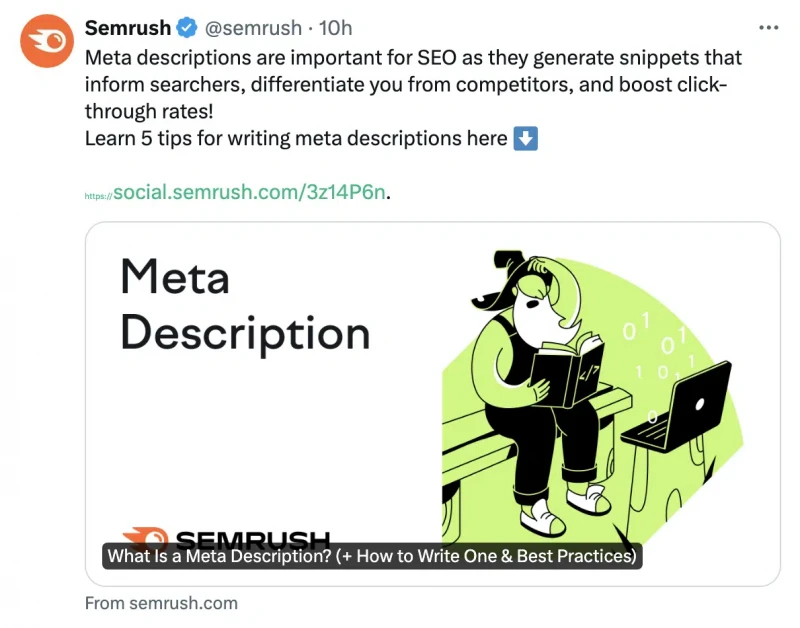
For example, Semrush shares link posts to point followers toward blog posts and other online resources.
Many platforms allow you to add links within image and video posts as well.
Livestreams
Livestreams let you connect with your audience in real-time. They’re great for demonstrating products, hosting panel discussions, and sharing expert insights.
Like this Motion LinkedIn Live event:
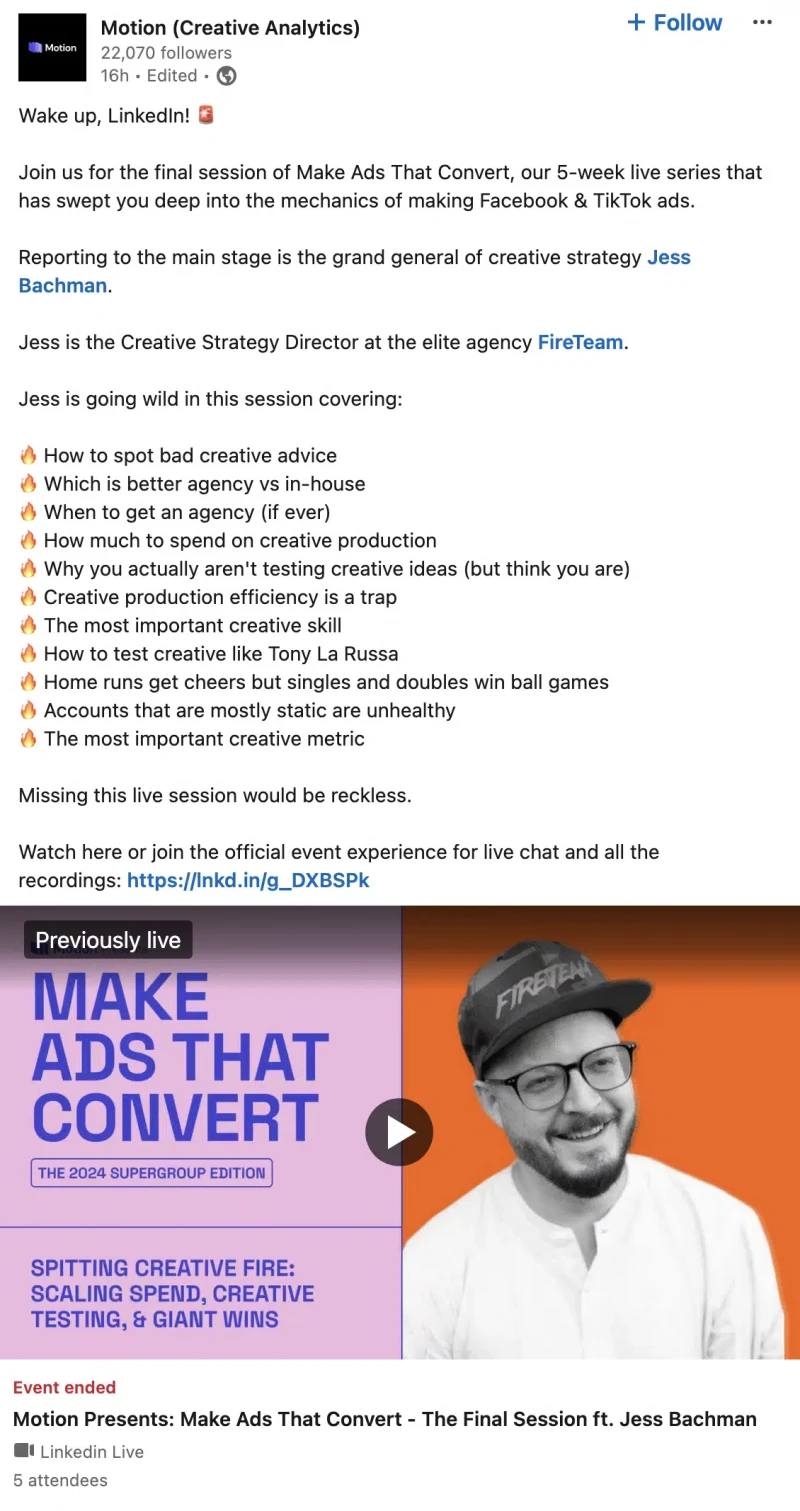
For example, this Motion livestream is one in a series that shares expert tips with the company’s target audience: creatives and digital advertisers.
5. Identify the right social media platforms
Theoretically, you can create content for more than a dozen different social media networks. But it may be more effective for your overall social media strategy to focus on far fewer.
To find the right platforms for your brand, start with statistics. The Pew Research Center shares data on the percentage of adults who use each social platform based on age, gender, income, and other factors.
For example, Pew’s data shows that Facebook and YouTube are the most popular platforms for users aged 50 to 64. And X is most popular among college graduates and users with advanced degrees.
Another way to research the right platforms for your audience is by checking One2Target in Semrush. Click the “Behavior” tab to see the number of followers each competitor has on each platform.
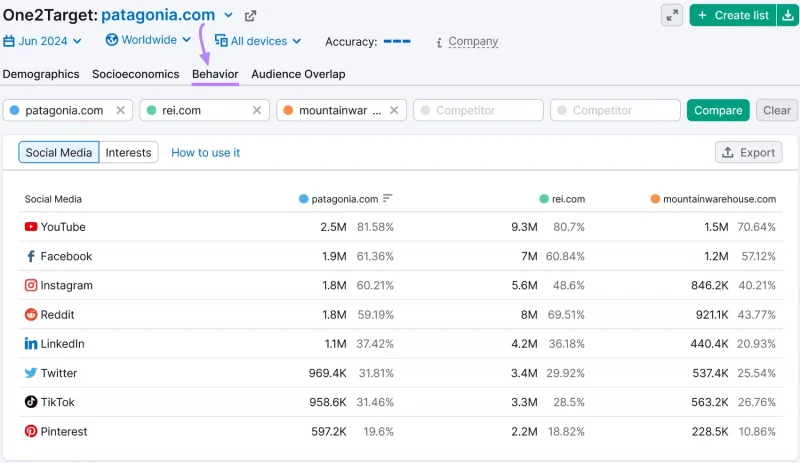
In the example above, each competitor has particularly large audiences on both YouTube and Facebook.
The most popular social media platforms include:
Facebook is the largest social media network, with 3.05 billion monthly users. It attracts B2B and B2C brands alike. It supports everything from text and link posts to photo and video content.
Here’s an example from Blue Bottle Coffee Facebook post, which uses text and images to announce a limited-time sale:
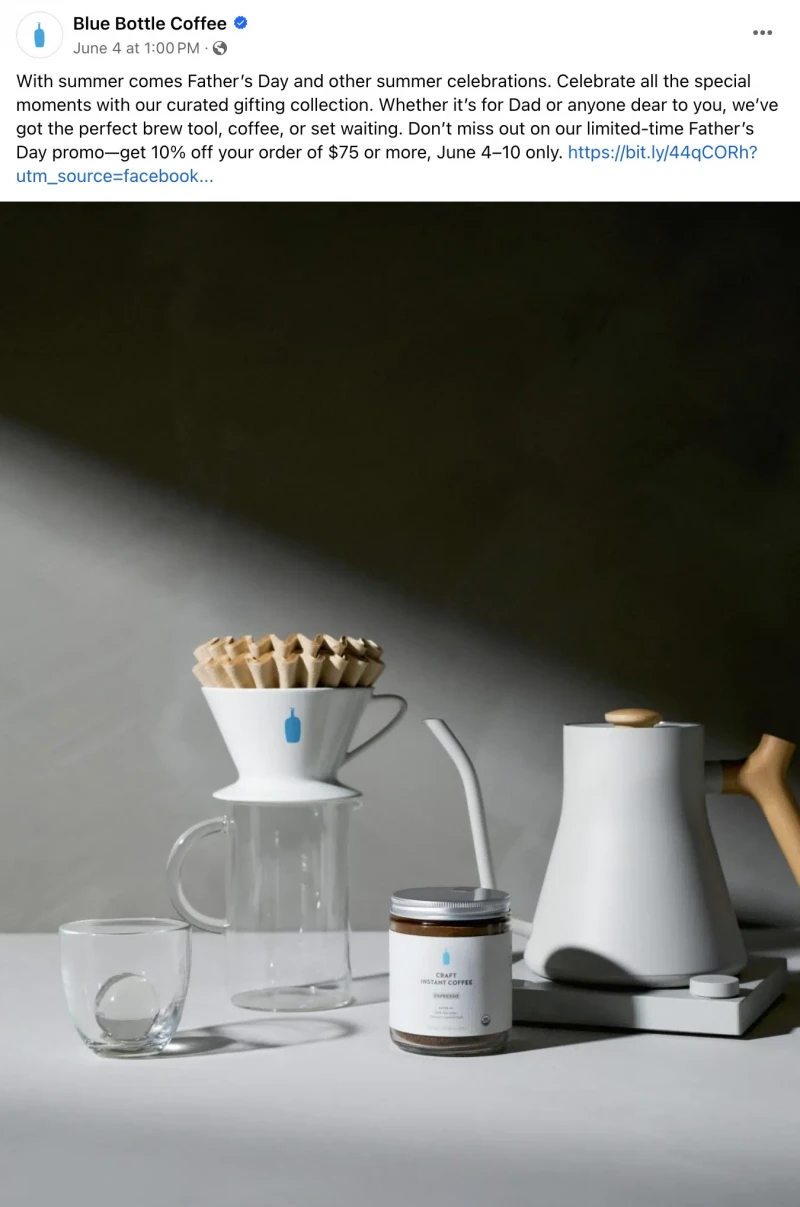
Although Instagram started as a photo-based platform, it now supports short-form videos. And stories, which expire after 24 hours.
Instagram is popular with both B2B and B2C brands. However, more B2C social media marketers consider it their most important platform, according to Statista.
Take this Olipop Instagram story, which depicts the brand’s camp-themed influencer event:
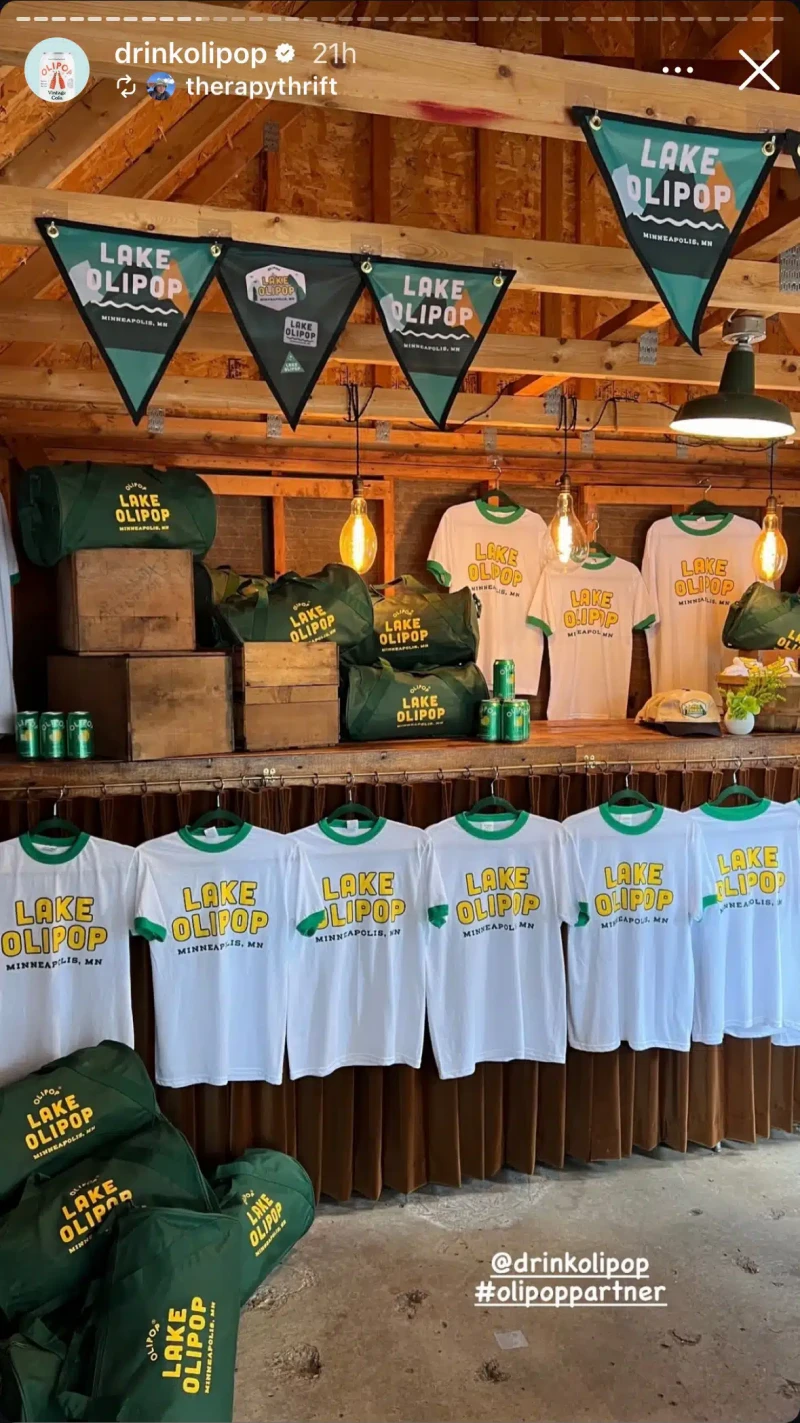
LinkedIn is a professional networking platform ideal for B2B brands and working professionals. Businesses and employees can share text posts, events, and slideshows on this platform.
Like this UserGems LinkedIn post, which shares slides with five tips for signal-based selling:

Known as a platform for shopping and learning new skills, Pinterest is popular with B2C brands. The platform has 518 million monthly active users.
For example, this ban.do pin links directly to the brand’s ecommerce store:
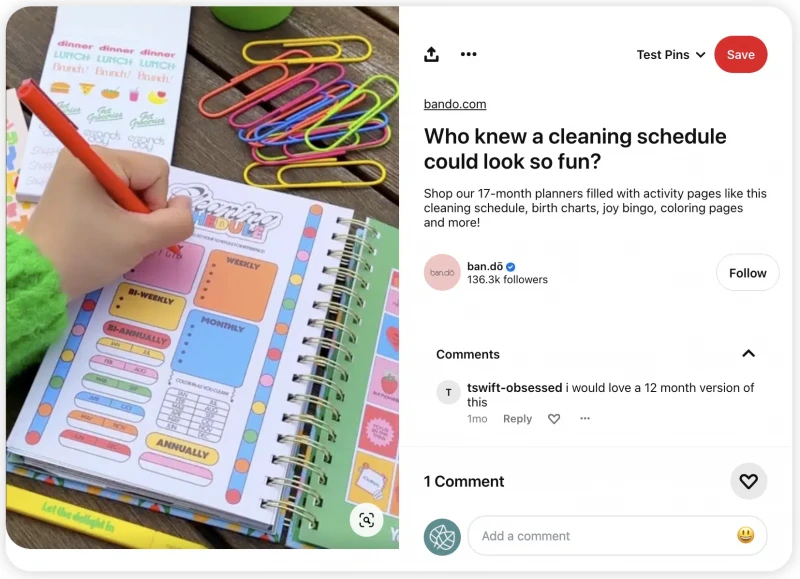
X
X is one of the smallest major platforms, with over 500 million monthly active users. But unique features for live events (Spaces) and long-form thoughts (articles and threads) make it popular with B2B and B2C users.
For example, this ColourPop Cosmetics X thread, which uses a thread to promote a product relaunch:

YouTube
YouTube is a video platform for both long-form and short-form videos. It boasts 2.49 billion users, making it the second most popular social network worldwide. This channel is ideal for brands that invest in storytelling or that produce how-to content.
Like Notion, which produces YouTube videos like the one below to show customers how to use the company’s productivity software:
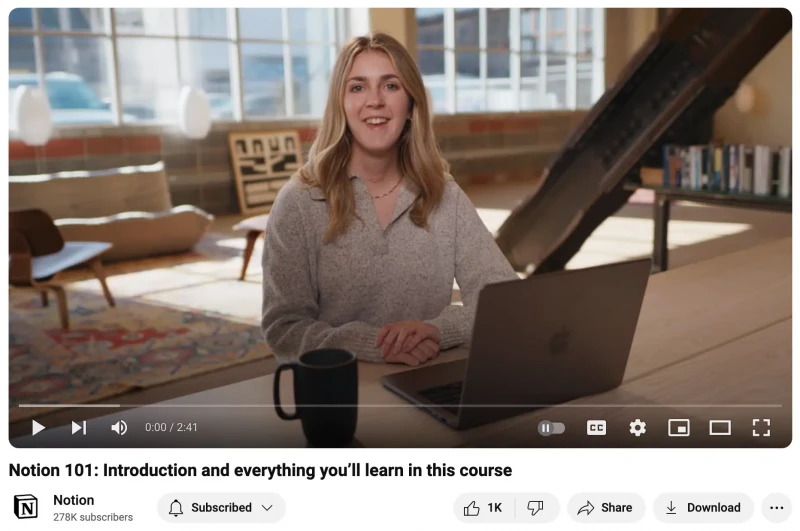
6. Write engaging copy
No matter which platforms you use or what type of content you create, you need engaging copy. Even when you post images and videos.
Social media copy is essential for sharing context and telling stories. In many cases, it also includes calls to action (CTAs), which prompt people to take the next step.
Use these tips to write better copy for social media:
- Start with a hook. Grab your audience’s attention from the very beginning. Start with a line that makes your audience want to read more. Avoid writing clickbait or misleading copy.
- Develop post templates. While your copy should always be original, the format and style don’t have to be. Use analytics to find what works best for your audience and turn top-performing posts into templates.
- Test different post lengths. Don’t assume your audience will always prefer shorter or longer posts. Instead, test different lengths to see what performs best.
- Experiment with CTAs. Calls to action don’t always have to wait until the end of the post. Use CTAs with different wording throughout the post to prompt the next step.
7. Develop a content calendar
Put your social content strategy to work by mapping out a calendar for your posts. With a social media calendar, you can keep track of ideas, draft content, and schedule posts.
Use Semrush’s Social Poster tool to create a social media content calendar. Select the social profile you want to use. Then, click “New post.”
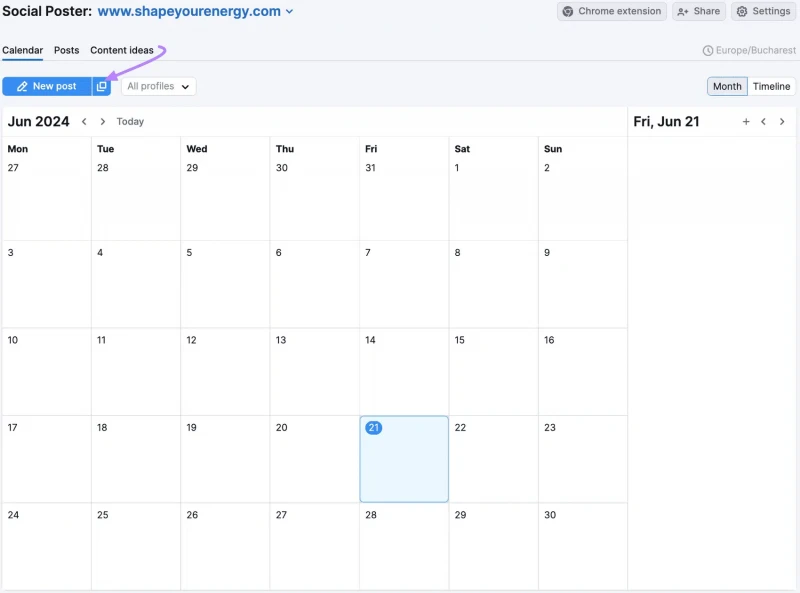
Write or copy and paste your caption. And upload an image or video.
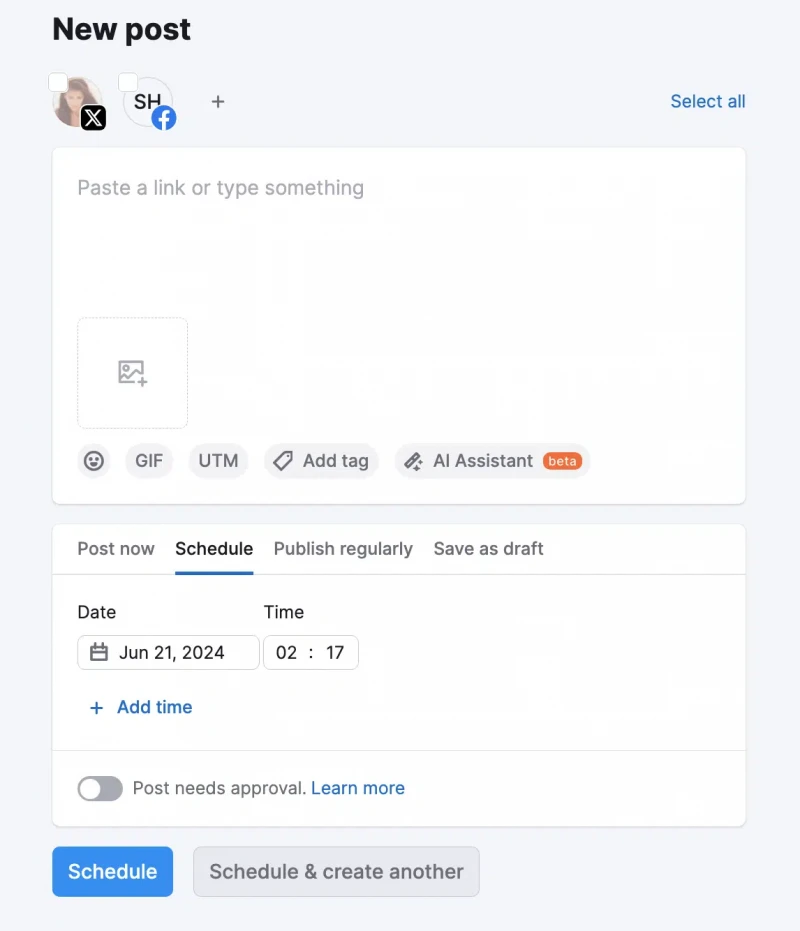
Toggle the “Post needs approval” switch if you need to get another team member to approve the post. Then, opt to publish right away, save as a draft, or choose a time to schedule the social media post.
With Social Poster, you can also publish content regularly under the “Publish regularly” tab. For example, you can schedule the same post to publish once a week for a month. Specify the date range and publishing frequency. Then, click “Publish regularly.”
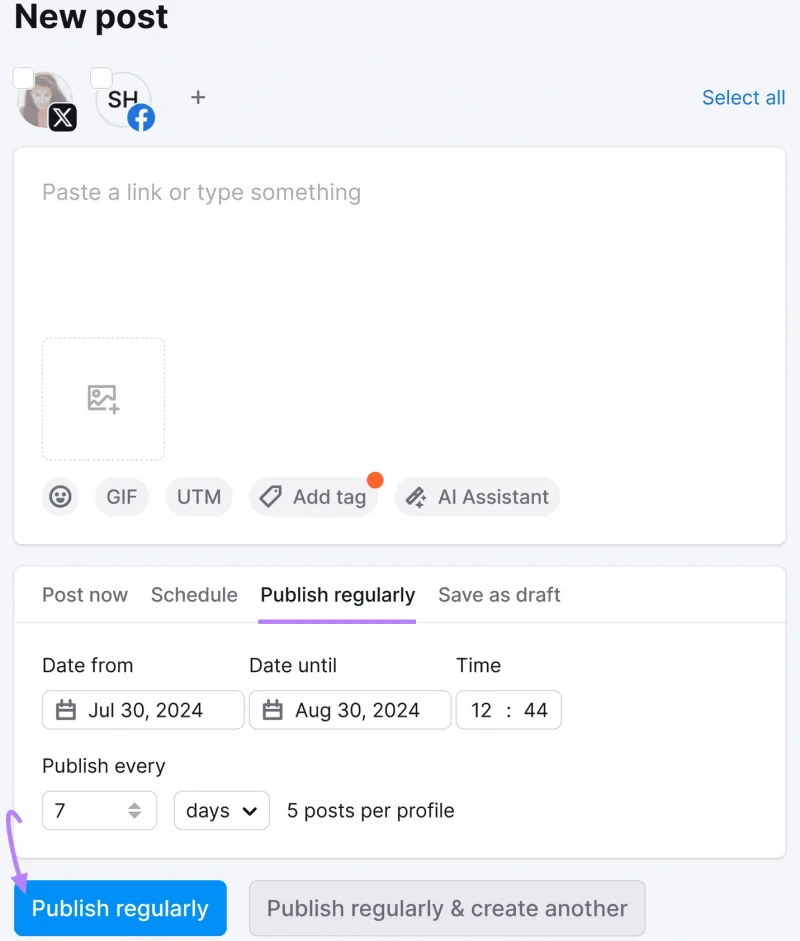
8. Analyze and optimize your social media content
Review the content you’ve already published to optimize your social media marketing strategy. And continue to create even better social media posts.
Enter Semrush’s Social Analytics under the “Social Media” tab. Select the social profile you want to analyze. Then, choose the social network you want to review. Or click “+ Add profile” to connect a new one.

Go to the “Posts” tab to analyze your content. The “Top posts” panel reveals your top-performing content. Use the posts to create templates for future ones.

The “Posts that upset people” panel shows posts that received negative feedback. Review them and read the comments to learn the reason. Then, make a note to avoid creating posts with these elements again.
Tools for creating social media content
Here are some of the top content creation tools for social media.
Semrush
Semrush is an online marketing software platform with a social media management suite. Its tools support your entire social media content marketing workflow.
It has tools for researching the competition and creating social posts. And for publishing and analyzing social media content.
Social media managers can use these Semrush tools to research, plan, create, and analyze content.
ContentShake AI
ContentShake AI is an AI-powered tool that generates social media posts. Based on your prompts (platform, topic, tone, and post type), it suggests multiple caption ideas.

It also has AI editing tools you can use to rephrase, simplify, or expand copy. And an AI chat feature that can generate images and headlines. To give you a head start on creating high-performing social posts.
Pricing
Free plan available. Paid plans start at $60 per month.
AI Social Content Generator
AI Social Content Generator is a branded content creation tool. It uses your brand colors, fonts, and logo to create consistent content for every platform. It can also resize posts to fit each platform.

This generative AI tool can turn text into videos, graphics, and carousels. It can also transform blogs and scripts into videos. To save time as you design content across multiple social media channels.
Pricing
$35 per month.
Social Tracker
Social Tracker monitors competitors’ social media accounts. It compares their audience growth and engagement metrics to yours. So you can spot opportunities for your brand to improve performance.
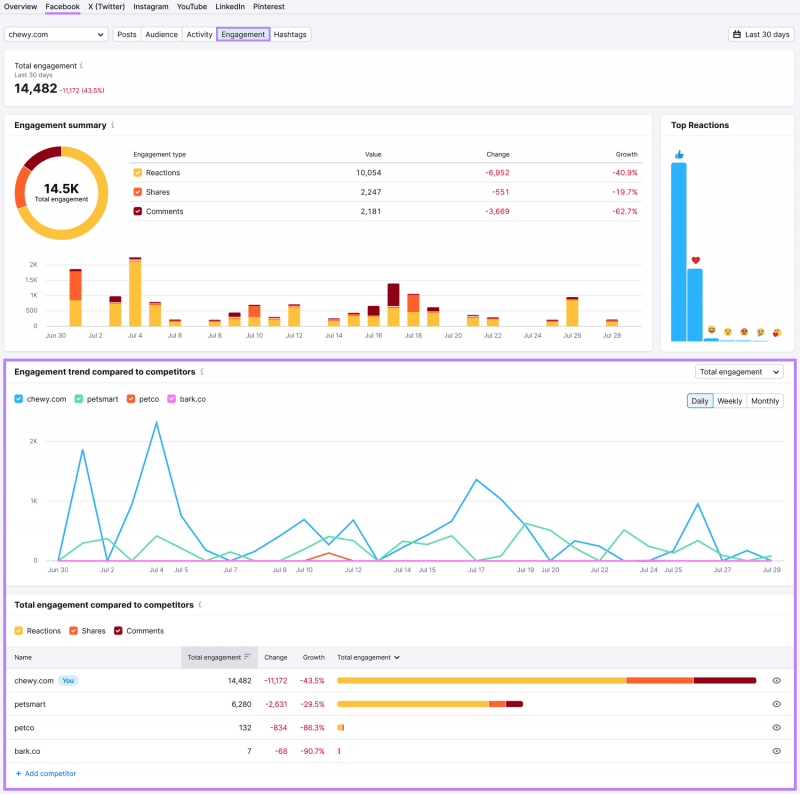
With Social Tracker, you can also see engagement trends. This data helps you understand when competitors’ content performs well. So you can explore why—and apply what you learn to your own content creation.
Pricing
$29.99 per month for all Semrush Social tools.
Social Poster
Social Poster schedules and publishes social media content. It has a calendar to help you plan posts. And it keeps track of your draft, published, and scheduled posts to help you stay organized.
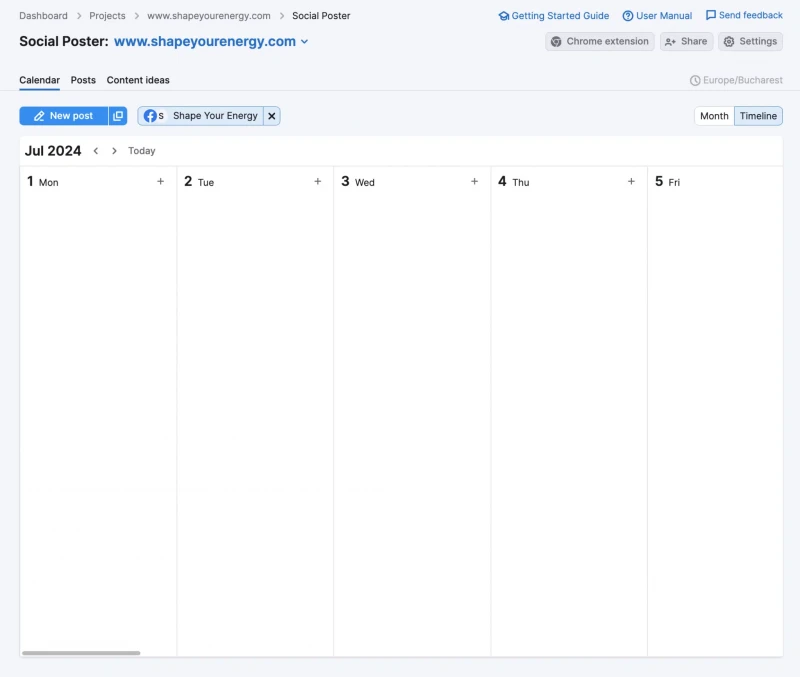
Pricing
$29.99 per month for all Semrush Social tools.
Social Analytics
Social Analytics tracks social media metrics. It monitors audience growth, post reach, engagement, and engagement rate. So you can see what drives the results you want and make progress toward your goals.
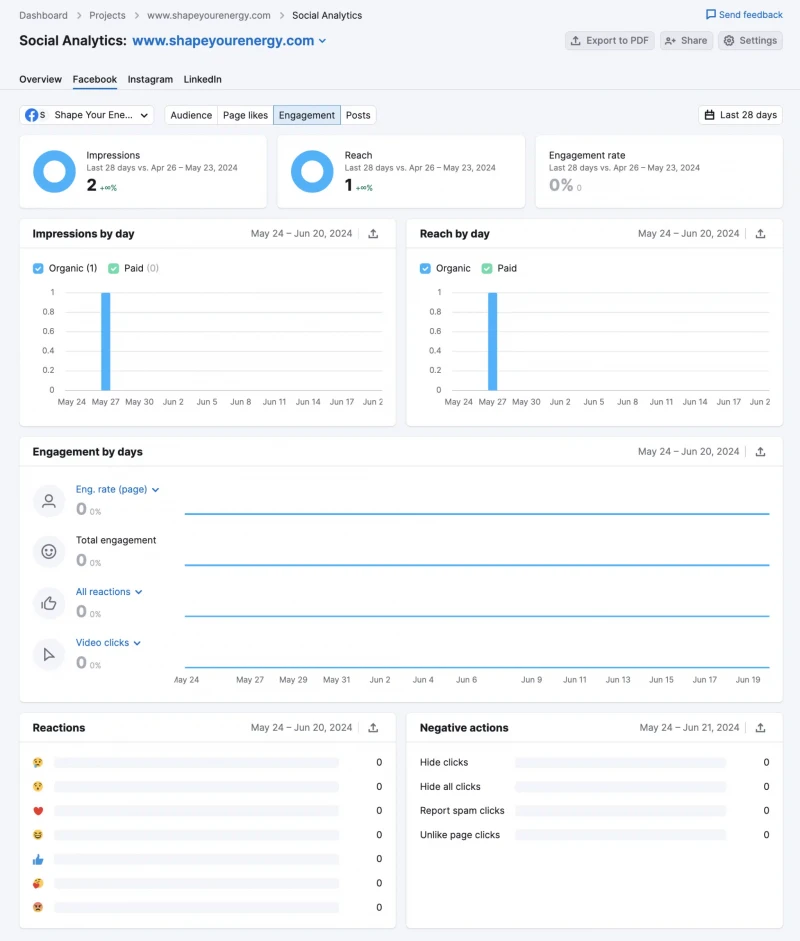
Pricing
$29.99 per month for all Semrush Social tools.
Canva
Canva is a design software suite for creating social media graphics and videos. Choose from thousands of content templates or design posts from scratch.
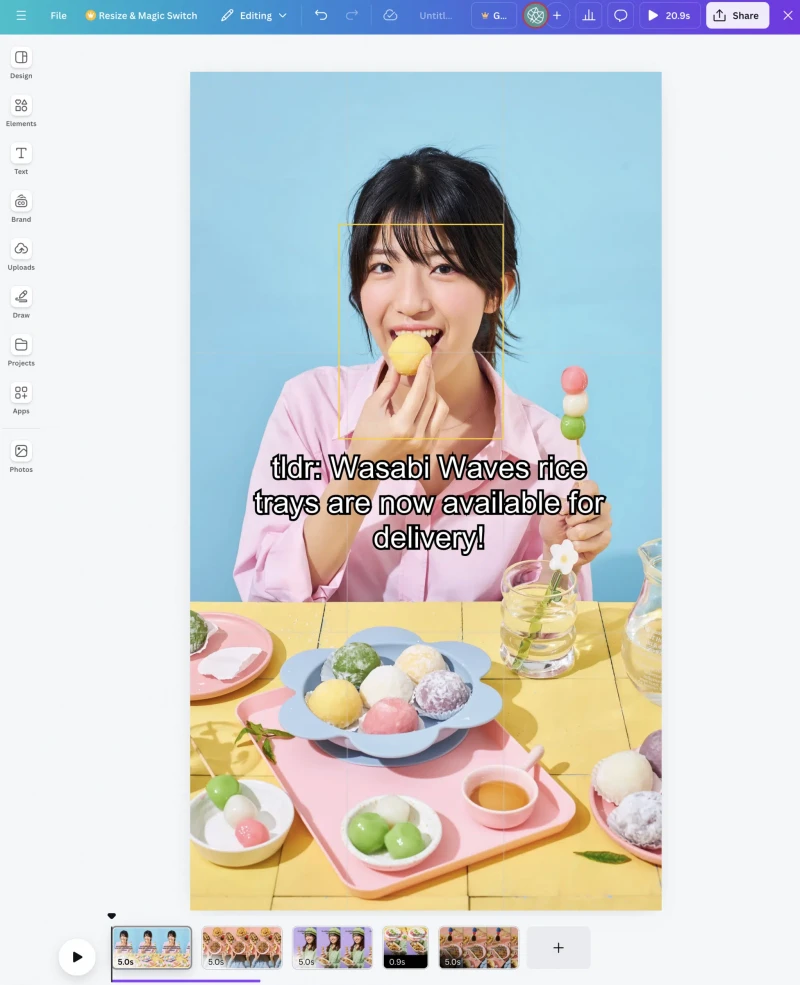
In addition, Canva has generative AI tools for writing copy, creating images or videos, and editing designs. The software can also schedule social media content and analyze engagement.
Pricing
Free plan available. Paid plans start at $15 per month.
Adobe Express
Like Canva, Adobe Express is a design suite for creating social media images and videos. In addition to templates, it has text-to-image, text-to-template, and generative-fill AI tools.
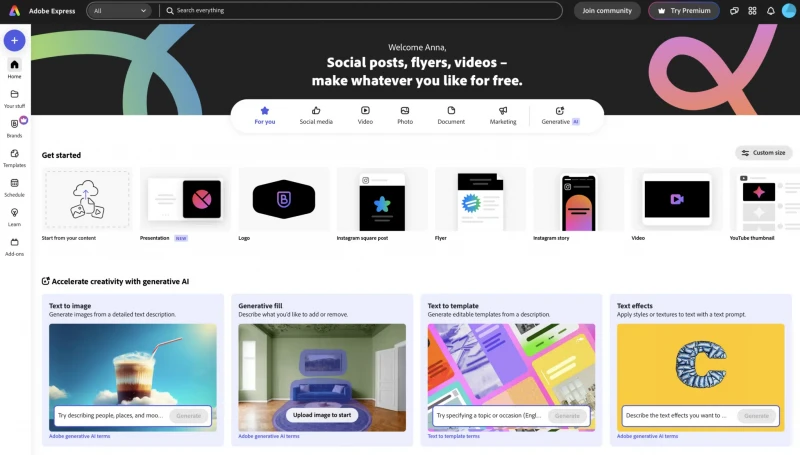
Adobe Express also has a content scheduler for planning and publishing content. However, it doesn’t offer social media analytics.
Pricing
Free plan available. Paid plans start at $9.99 per month.
ChatGPT
ChatGPT is a generative AI tool that can suggest ideas and draft social media copy. Here’s how to use ChatGPT for social media content creation.
To get post ideas, first provide context. Explain the nature of the post and the social platform. Then, ask ChatGPT to suggest ideas for content formats:
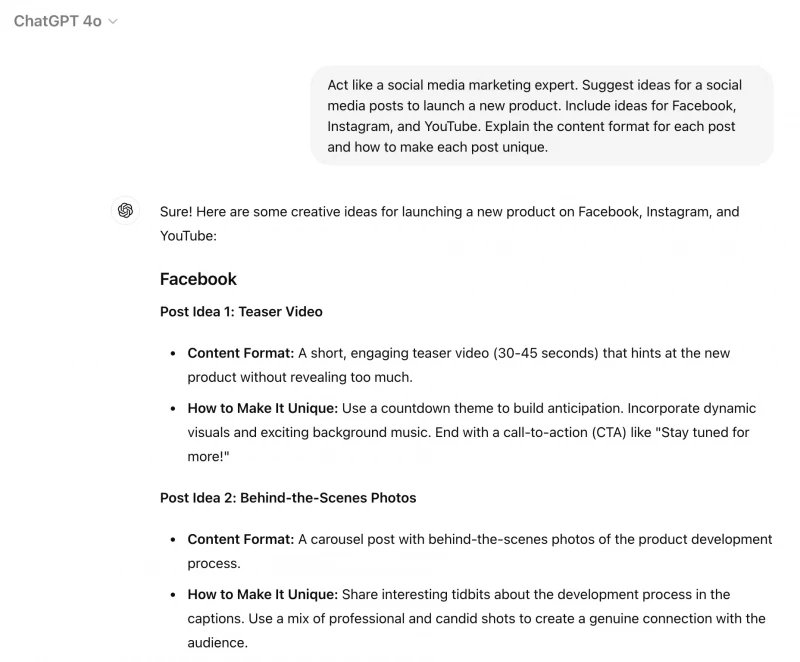
Next, take the ideas you generated and ask ChatGPT to turn them into posts. Provide more context as needed.
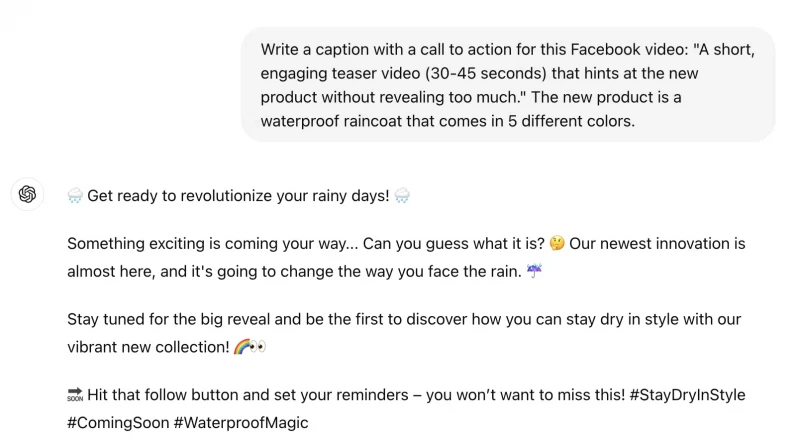
Then, refine the caption to fit your brand and meet your goal. For example, you can prompt ChatGPT to shorten the copy, expand on certain ideas, or adjust the tone.
Pricing
Free plan available. Paid plans start at $20 per month.
Crafting social media content that captivates and converts
High-performing social media content can help your brand meet important marketing goals. Like improving brand awareness, driving website traffic, and generating leads or sales.
Semrush’s software simplifies the social media content creation process. Create content using ContentShake AI and AI Social Content Generator, and schedule and analyze posts using Semrush Social.
Start creating better social media content faster today. Sign up for a free trial for Semrush.